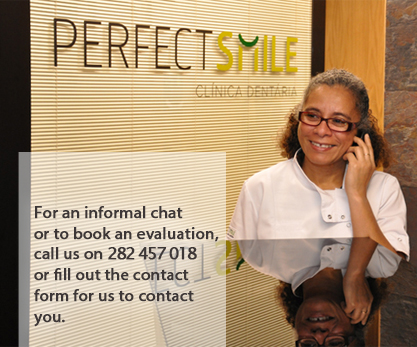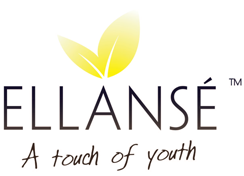 Sun Damaged Skin
Sun Damaged Skin
Cutaneous ageing signs of sun damaged skin become visible from as early as the twenties, especially with excessive sun or environmental exposure. However between the ages of 35 to 49 years there is a sharp increase in prevalence of skin changes clearly ascribable to photo-ageing such as pigmented spots and sun damaged skin. Awareness of the damaging effect of UV radiation on the facial appearance and sun avoidance and protection before the age of twenty will help reduce the risks for developing sun damaged skin later in life.
Ageing skin and sun damaged skin unsettles women more than men; because society believes a woman loses her attractiveness once visible signs of facial ageing set in. Characteristics of facial sun damaged skin include fine and coarse wrinkle formation, pigmentation changes, sallow color, dry texture, loss of elasticity, loss of skin tone, sagging subcutaneous tissues, underlying muscle hypertrophy and volume loss in the face.
Sun damaged skin is associated with a range of cosmetic concerns - from pigmentation problems and splotchy skin to redness due to enlarged vessels or capillaries, all causing discoloration of the skin. Photo ageing caused by ultraviolet light exposure, tends to act more on the surface of the skin. There are sun freckles or irregular pigmentation and dilated blood vessels (often referred to as "broken" blood vessels) that lead to an overall uneven tone and discoloration.
How does sun exposure age our skin?
Without protection from the sun's rays, just a few minutes of exposure each day over the years can cause noticeable changes to the skin. Freckles, age spots, spider veins on the face, rough and leathery skin, fine wrinkles that disappear when stretched, loose skin, a blotchy complexion, actinic keratoses (thick wart-like, rough, reddish patches of skin), and skin cancer can all be traced to sun exposure.
The skin ages when the epidermis (outer layer of the skin) begins to thin, causing the junction with the dermis (outer layer) to flatten. Sun damaged skin has a thicker epidermis, which is "dead" and irregular. There is increased water loss from the skin and a decrease of the sebaceous glands, which provides natural moisture to the skin. More abnormal cells accumulate in aged skin, especially if there is chronic sun damage, which can lead to pre-cancerous and cancerous lesions.
Scientific studies have shown that repeated ultraviolet (UV) exposure breaks down collagen and impairs the synthesis of new collagen. The sun also attacks our elastin. Sun damaged skin also causes chronic inflammation of the skin and an increase of elastin that clusters into thick bundles called solar elastosis. Collagen decreases as we age and the bundles of collagen, which gives the skin turgor, become looser and lose strength.
People with fair skin who have a history of sun exposure develop more signs of sun damage than those with dark skin. In people of color, the signs of sun damage are usually limited to fine wrinkles, a mottled complexion and sagging of the mid-face leading to under eye bags.
The degree of sun damage as classified by Glogau:
1. Mild (age 28-35 years): Few wrinkles, no actinic keratosis (tender red dry spots), requires little or no make-up.
2. Moderate (age 35-50 years): Early wrinkling, sallow complexion with early actinic keratosis (tender red dry spots), requires little make-up.
3. Advanced (age 50-60 years): Persistent wrinkling, discoloration of the skin with telangiectasia and actinic keratosis (tender red dry spots), always wears make-up.
4. Severe (age 65-70 years): Severe wrinkling, photo ageing, gravitational and dynamic forces affecting skin, actinic keratosis (tender red dry spots) with or without skin cancer, wears makeup with poor coverage.
Home therapies:
At Clínica Privé we offer traditional topical home therapies such as AHAs, PHAs, growth factors and peptides, as well as recent advances in pigmentation technology. Clínica Privé is proud to be the stockists of award winning product brands specializing in scientifically proven cosmeceutical skin care for pigmentation: ZO SKIN HEALTH Cosmeceuticals.
In Office therapies:
At Clínica Privé with the introduction of photo rejuvenation treatments and exfoliation treatments such as CO2RE Fractional Laser Resurfacing, Vbeam Photofacial, Cosmelan & Dermamelan by Mesoestetic, TCA and OBAGI Blue Peel, virtually any patient can be a candidate for improving sun damaged skin, depending on the area and the skin type.
The new concept today is to start with photo rejuvenation devices early so as to prevent the deterioration of skin color and texture as one gets older.
If we can treat sun-damaged skin at an earlier age and stimulate the growth of new collagen, we might actually slow down the ageing process significantly. This allows us to have healthier, better-looking skin later on in life, during our golden years. Perhaps even more promising is the idea that treating skin with ablative lasers earlier on in the ageing process - at around age 30-40 may actually slow or prevent the skin from breaking down and appearing wrinkled and saggy later on in life. In addition it has been clinically proven that after ablative laser treatments, there is a significant decrease in the level of p53 expression in biopsies obtained 3 months after treatment compared with baseline. By decreasing p53 expression with ablative lasers, there may be prevention of actinic neoplasia or skin cancers, which are caused by excessive sun exposure.
Clínica Privé Tip
Badly sun damaged facial skin with deep, ingrained wrinkles is a challenging condition to treat. Any non-ablative treatment modality on its own cannot make a big difference. Ingrained facial wrinkles have different forms and grades and success at combating these needs a combination of treatments that include Dermal Filler rejuvenation, laser rejuvenation with Laser Genesis or CO2RE Fractional Laser Resurfacing, Carboxytherapy and injection Mesotherapy (Carboxy-MesoGLOW Facial). After treatment with injectable filler, a combination of Laser Genesis and EndyMED 3DEEP Skin Tightening is the treatment of choice to treat more advanced facial wrinkling issues. This procedure is done one to two days after a filler procedure and is repeated every 2 to 3 days for a total of 6 - 8 treatments for optimal results.









